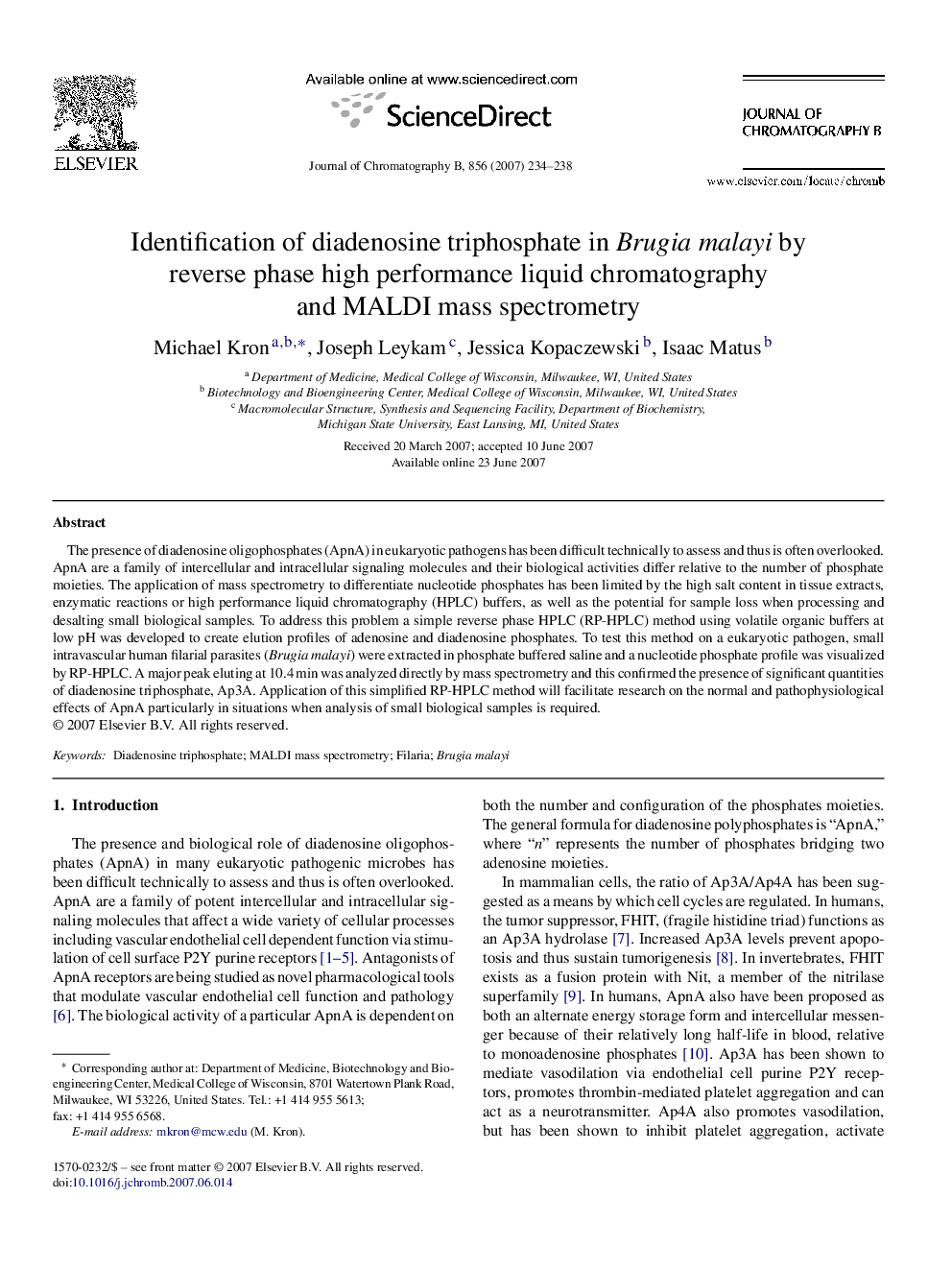| Article ID | Journal | Published Year | Pages | File Type |
|---|---|---|---|---|
| 1217730 | Journal of Chromatography B | 2007 | 5 Pages |
The presence of diadenosine oligophosphates (ApnA) in eukaryotic pathogens has been difficult technically to assess and thus is often overlooked. ApnA are a family of intercellular and intracellular signaling molecules and their biological activities differ relative to the number of phosphate moieties. The application of mass spectrometry to differentiate nucleotide phosphates has been limited by the high salt content in tissue extracts, enzymatic reactions or high performance liquid chromatography (HPLC) buffers, as well as the potential for sample loss when processing and desalting small biological samples. To address this problem a simple reverse phase HPLC (RP-HPLC) method using volatile organic buffers at low pH was developed to create elution profiles of adenosine and diadenosine phosphates. To test this method on a eukaryotic pathogen, small intravascular human filarial parasites (Brugia malayi) were extracted in phosphate buffered saline and a nucleotide phosphate profile was visualized by RP-HPLC. A major peak eluting at 10.4 min was analyzed directly by mass spectrometry and this confirmed the presence of significant quantities of diadenosine triphosphate, Ap3A. Application of this simplified RP-HPLC method will facilitate research on the normal and pathophysiological effects of ApnA particularly in situations when analysis of small biological samples is required.
